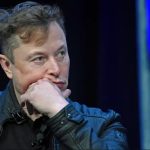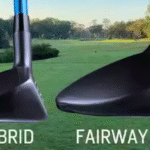Sometimes opening a company in Switzerland requires you to have a look at information concerning intellectual property, especially if you have invented something unknown and innovative that you would like to have patented. Further, we will look through some aspects of intellectual property in Switzerland.
The List of Intellectual Property Rights Subject to Protection
- Inventions and Discoveries. The Federal Act on Patents for Inventions states that all patents are presented for novel inventions that are applicable to and relevant to the industry. All things that are evident with regard to the latest advancements are not granted with a patent. There are some inventions, which are not entitled to a patent. For instance, methods of health maintenance, gene sequences, or simple software programs.
Moreover, statutory conditions allow you to be granted with supplementary protection certificate for the active substance or combination of active agents of pharmaceutical products. In addition, any discovery in the form of a utility model does not pertain to protection.
No technological advancement, know-how, trade secret, or other suchlike confidential data is attributed to intellectual property rights. In this case, protection is provided with unfair competition law or mere contractual provisions.
- Corporate Identity. Brands. Current legislation (TmPA) in terms of trademarks provides protection of distinctive features represented as a pattern of a trademark in cases when they are not deceptive or not in conflict with public order, ethics, or practiced law. In addition, TmPA grants protection for guarantee marks and collective marks.
Usually, all guarantee marks are used by several enterprises and act as signs that ensure the quality, production method, geographical origin, or similar features immanent to the services or commodities of such enterprises.
Any collective mark is represented by a peculiar sign of a group of enterprises, which is designed to distinguish the services or commodities provided by such a group of companies from other similar businesses.
At the same time, the TmPA introduced certain provisions concerning the indication of source and appellation of origin.
- Proprietary and technology rights. This part includes copyright, database rights, rights in circuit layout, right to an industrial design, plant varieties, and so on.
Copyright protects intellectual creations featured with individual peculiarities when it comes to literature or artists. Despite the fact that computer programs are not subject to patents they are protected by copyright.
Intellectual Property Rights Duration
The protection time of patents is estimated for a period of twenty years maximum, starting from the date of application for a patent. An active ingredient or combination of active agents that have been patented for 20 years may be protected by supplementary protection certificates after the date of patent expiration for a period of five years. Another example is a pediatric supplementary protection certificate that may allow a doctor to continue with his or her relevant activity for as long as six months after the time of expiry.
As for trademarks, they are protected for ten years beginning from the date of application filing. Federal Institute of Intellectual Property accepts requests for protection renewal on an indefinite basis after each period of ten years. All renewals are performed as soon as they are considered by the Institute including the corresponding renewal payment.
Domain addresses are supposed to be renewed on an annual basis after payment of the respective registration fee.
Protection of designs takes five years starting from the date of submission of the appropriate application. Further, it can be protected for the next 25 years after covering the corresponding renewal fee. The period of 25 years is divided into four parts, where each one consists of five years.
The CopA ensures the protection of all creations from the time they are created. Such protection ends seventy years after the author’s decease. There are two exceptions to this rule – fifty years after the death of an author of a computer program and photo images together with 3-dimensional objects provided that such images and objects are not of individual character.
In the event that the author is unknown the period of protection ends after 70 years from the moment when it had been published.
Semiconductor topography rights are registered in case all relevant documents for application are correct and the respective fee is covered. The next ten years is the term when your circuit layout rights will be protected.
After fulfillment of all necessary procedures regarding the protection of the plant variety the duration of protection takes thirty years for tree species and twenty five for the rest of them.
The First Owner of Intellectual Property Rights
In case when all necessary procedures are done and all corresponding demands are met, the first owner is considered to be the individual who created an intellectual property right. If you are a creator then you will be granted a copyright. In case when you are an inventor then you will be entitled to a patent. All trademarks and domain address ownership require registration.
The next refers to the labor relationship:
- An employee who created the work is considered to be the owner of the copyright and at the same time, such copyright is submitted to the employer to some certain extent specified in the labor agreement. For example, when the software was created within the period of a hire agreement in the process of carrying out professional duties or performance of contractual commitments the worker is granted ownership but it will be only the employer who will have the rights to use it.
- In the event when a design or an invention were created by the worker alone or together with other employees during the time of his or her working activity for the employer during the working hours and fulfilling his or her contractual commitments belong to the employer despite the fact if they are protected or not. Moreover, all employers are entitled to reserve the rights to obtain designs and inventions made by their respective employees during their working activity but not in fulfillment of his or her contractual commitments. In this case, the worker makes a corresponding notification to his or her employer in written form. After that, an employee is granted a separate and relevant remuneration.















